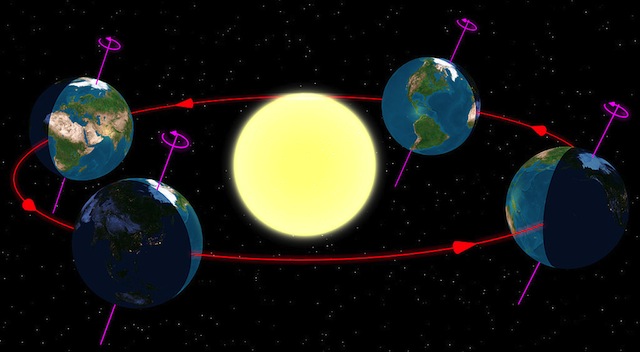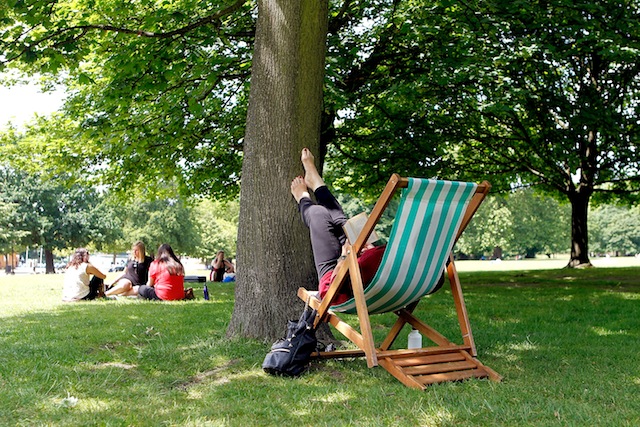
Midsummer, the first day of summer, the longest day of the year, these are all names given to the summer solstice, a scientific and cultural day of significance here on Earth.
This year the summer solstice falls on Saturday, June 21.
Here is what you need to know about the holiday, the science, and the summer:
1. It Is When the Northern Hemisphere Has the Most Extreme Tilt

(Wikimedia)
Twice a year, as the Earth spins on its axis, it reaches the point of maximum tilt, either when the northern hemisphere is the most tilted toward the sun, summer, or when it is tilted the furthest from the sun, winter. These two moments are known as the solstice. Look at the diagram above for an illustration of this tilting.
It is a common misconception that summer heat occurs because the hemisphere is closer to the sun, but this is not true. Because more of the hemisphere is directly in the Sun’s rays for longer increments of time, it absorbs more of its energy.
2. Parts of the East Coast Will Get 15 Hours of Sunlight

(Getty)
Because the northern hemisphere will receive more sunlight for longer due to the Earth’s tilt, June 21 will be the longest day of the year. On the east coast, the United States should receive almost 13 hours of sunlight, with the sun rising at 5:34 a.m. and setting at 8:37 p.m. In Alaska, much closer to the north pole and therefore exposed to the most amount of sunlight during this extreme tilt, the sun will rise at 3:52 a.m. and set at around 10:00 p.m.
3. It’s Celebrated With Both Christian Feasts & Pagan Rituals

(Getty)
Every year on the summer solstice, pagans in Northern Europe celebrated the holiday Midsummer, and commemorated the celestial movements with big bon fires that can still be seen a celebrations across the world today. In order to subvert the ancient pagans celebrating Midsummer, the Christian church created the feats of St. John the Baptist to coincide with the holiday.
4. Stonehenge is Aligned to the Summer Solstice’s Setting Sun

(WikiMedia)
Stonehenge is believed to have been the site of some sort of structure or temple since as early as 8,000 BCE. After centuries of confusion over what the function of the stone circles do, astronomers realized that the central alleyways align with major celestial events, such as the summer and winter solstices.
The diagram above shows how the sun would move through the central alley.
5. The Southern Hemisphere Currently Has the Shortest Day of the Year
The summer solstice for the northern hemisphere is the winter solstice in the southern as that region of the globe is in direct sunlight for the least amount of time due to the tilt in the axis. For this reason, on June 21, the southern region of the world will be experiencing their shortest day of the year.